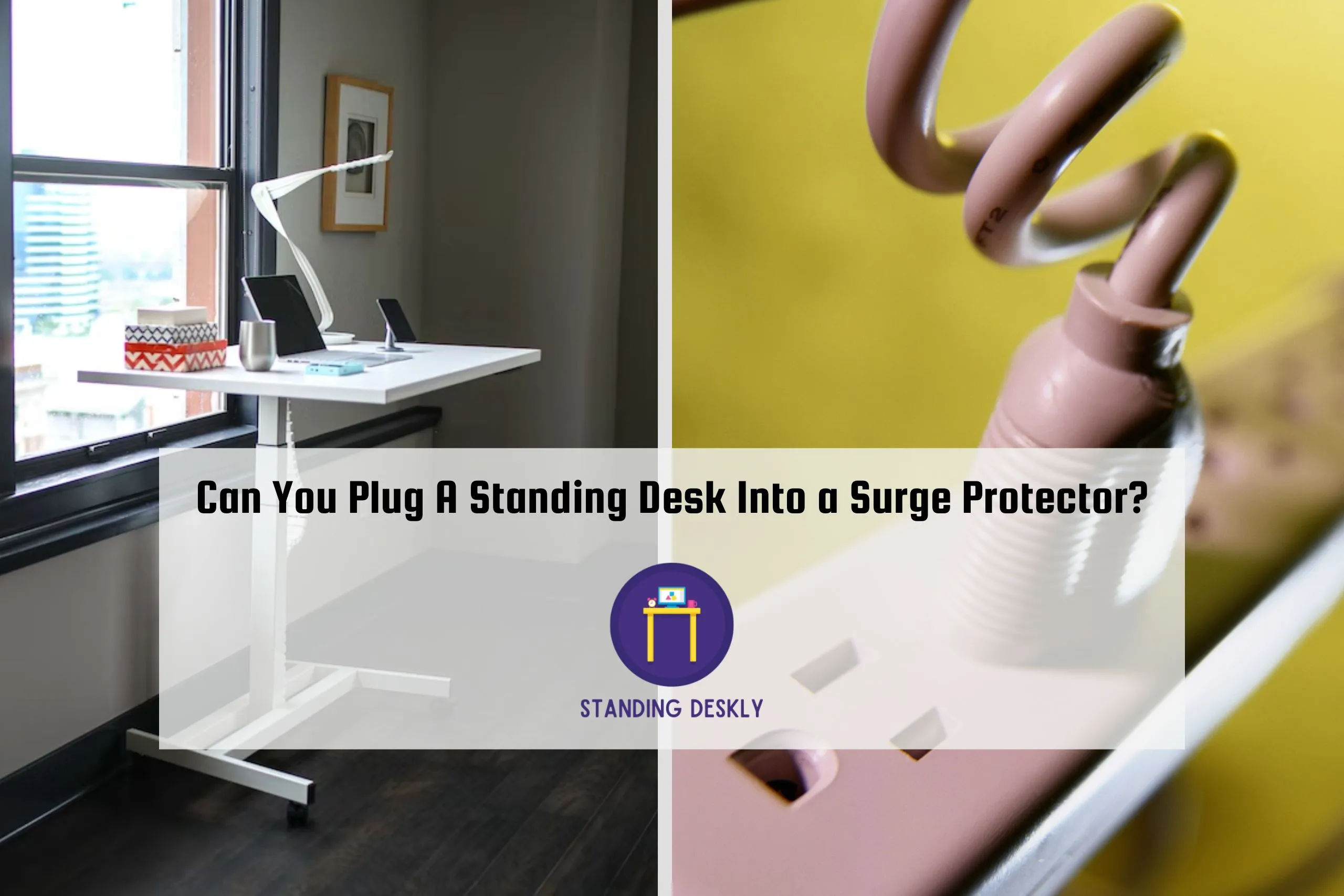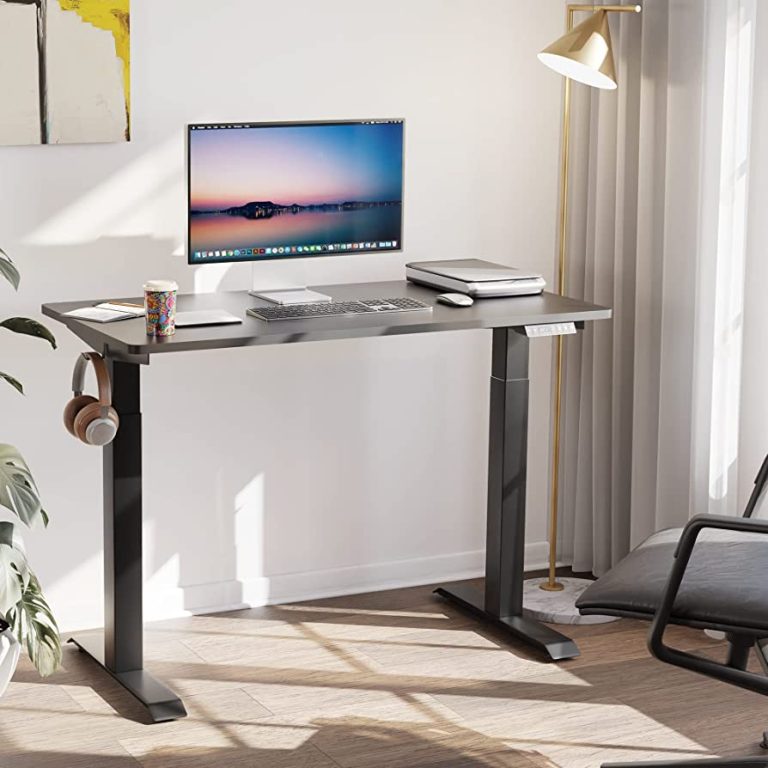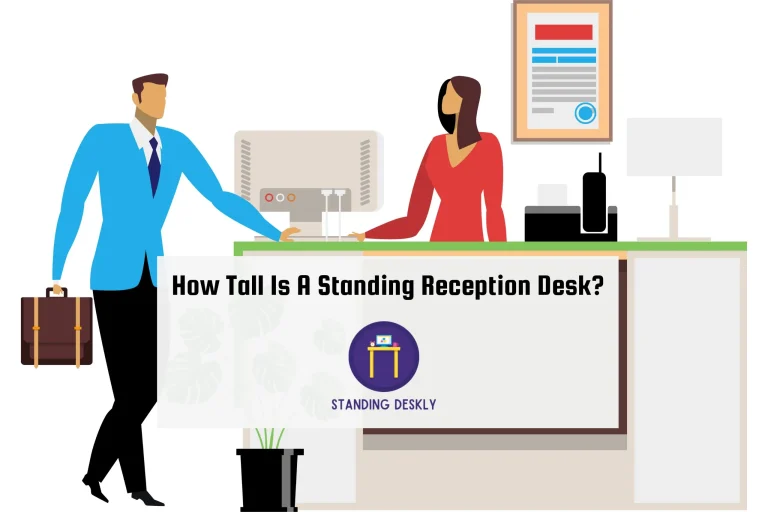Can You Plug A Standing Desk Into a Surge Protector?
Yes, you can plug a standing desk into a surge protector.
Plugging a standing desk into a surge protector is an easy way to make sure your important electronics stay safe from power outages and surges. It’s also important to make sure you have the right surge protector for your standing desk. A good quality surge protector can help protect against overvoltage, undervoltage, voltage spikes, and other electrical problems.
When picking the right surge protector for your standing desk, you should think about how many watts it can handle and how many amps it can handle. Most wall outlets can handle 15 or 20 amps, so you’ll need to make sure that the surge protector can handle at least this much load.
But, whether you’re a novice or experienced when it comes to electronic devices and wiring, there are certain things you need to consider and understand before taking the plunge. Learn more about the placement and connection of your standing desk, safety considerations, what’s safe to plug into surge protectors, and more. With this knowledge, you can make an informed decision that will keep your devices safe while giving you the benefits of using a standing desk.
Placement & Connections
When it comes to plugging your standing desk into a surge protector, there are some important placement and connection considerations you need to take into account. It’s important that the outlet where your desk is plugged in is easy to reach and not too close to other things or furniture.
If you put your surge protector behind your standing desk, it could block the flow of air in the room, which could cause it to get too hot. Instead, aim to keep the power outlet at least 12 inches away from anything else that could impede airflow.
It’s also important to make sure your surge protector has enough outlets for all of your equipment. Consider buying a model with more outlets than you need so that you can plug in any extra devices you might get in the future. If you want to connect more than one monitor to your computer, it might be a good idea to buy a surge protector with extra ports made for this purpose.
Finally, consider using a cord organizer if you have multiple cords running from your desk to the wall outlet. This will help reduce clutter and make it easier for you to find the right port when connecting new devices or disconnecting them as needed.
Safety Considerations
Safety is the most important thing to think about when plugging a standing desk into a surge protector. It is critical to ensure that all connections are secure and properly placed to avoid electric shock or fire hazards.
When connecting the surge protector to the wall outlet, use a three-prong plug, not a two-prong option. This ensures that the desk is properly grounded and protected from potential voltage surges.
Additionally, check that the outlet is rated for the wattage of your standing desk before plugging it in; if it’s not, you should use an outlet with a sufficient power rating to prevent overheating.
Extension cords and power strips can also be dangerous. They should only be used as a last resort because they can’t protect against voltage surges and other electrical hazards as well as a surge protector can. If you must use an extension cord or power strip, make sure that it has been tested and certified by a qualified electrician, and inspect it regularly for fraying or loose connections.
Also ensure that your standing desk does not have any exposed electrical wires, which could become a shock hazard if touched by someone in your home.
Finally, never attempt to repair a power strip or surge protector yourself; if something appears broken or damaged, replace it immediately with an appropriate device certified by an electrician for added safety.
Can I Plug A Standing Desk Into A Power Strip?
Yes, you can plug a standing desk into a power strip. Power strips are an efficient way to connect multiple electronic devices to one power outlet. This is especially useful when using a standing desk because it allows you to plug in your laptop, monitor, phone charger, and other electronics without the need for additional outlets near the desk.
When using a power strip with a standing desk, make sure the strip has enough capacity for all of the connected devices and that it is labeled “suitable for use with electric desks.” Also, make sure that your power strip has surge protection. This will keep your devices safe from sudden voltage spikes or other electrical problems.
Can You Put A Surge Protector On A Desk?
Yes, you can put a surge protector on a desk. In fact, adding a surge protector to your standing desk can be an excellent way to protect your electronics from electrical surges and power outages. Surge protectors work by soaking up extra electricity when there is a power surge. This gives you peace of mind that your equipment won’t be damaged.
When it comes to putting a surge protector on your desk, there are some important considerations.
First and foremost, make sure the surge protector is close enough to the wall outlet so you don’t have to use any extension cords. This will help eliminate the risk of an accidental fire caused by running too many cords or using them incorrectly.
You should also make sure that the surge protector you choose is rated for the number of electrical devices you plan on connecting to it.
It’s also important to note that if the space behind your standing desk isn’t easy to access, you may want to try mounting the surge protector directly onto the desk itself. This way, all of your outlets will be in one convenient location, and you won’t have cords trailing along behind your desk or up near the wall.
When mounting a surge protector, make sure that it is securely attached so it doesn’t slip or come loose over time.
Finally, remember that if you have multiple electronic devices connected to a single outlet or surge protector, be sure not to overload it as this can lead to overheating and damage to both your equipment and the outlet itself. With these simple tips in mind, adding a surge protector can be an easy and effective way to protect your electronics while working at your standing desk.
What Is Safe To Plug Into A Surge Protector?
When it comes to plugging electrical items into a surge protector, it’s important to make sure you’re only plugging in devices that are safe to use.
Generally, surge protectors can be used with a variety of electronics, including your computer, television, lamps, and even larger household appliances like refrigerators. Some items, though, might need special surge protection or a different kind of outlet.
For example, high-powered devices such as power tools should never be plugged into a surge protector. These types of devices require an individual circuit to ensure they receive enough power; otherwise, they could cause serious damage.
Additionally, any electric device with exposed wiring should never be plugged into a surge protector; these items need to remain disconnected until the wiring has been checked by an electrician or other qualified professional.
Lastly, when plugging an electrical item into your surge protector, make sure that the wattage rating for the outlet does not go over the maximum wattage for which it is rated. If you go over this limit, you may have to deal with blown fuses and sparks that could be dangerous.
Should Computers Be Plugged Into A Surge Protector?
Absolutely—computers and other electronic equipment should always be plugged into a surge protector. A surge protector acts like an insurance policy, reducing the risk of damage from power surges. Power surges can cause serious harm to your computer, including hardware failure, data loss, and even fire hazards.
Surge protectors act as a buffer between your computer’s power supply and the outlet. They soak up any extra voltage that might come through, making sure that your device only gets the right amount of power. This protects your equipment from unexpected spikes in electricity, which can happen during storms or when appliances are turned on and off.
A good quality surge protector will also have other features such as EMI/RFI filtering (which helps reduce interference from radio signals), overload protection (which shuts down the unit if it exceeds its maximum load capacity), and lightning protection (which acts as an extra layer of safety).
It’s important to note that not all surge protectors are equal; some may offer better protection than others depending on their features. Be sure to check for certifications such as UL 1449 before you purchase one for your computer.
Conclusion
In the end, a surge protector can be used to safely plug in a standing desk. It is important to make sure that the power strip is rated for the amount of power your desk requires and to only plug in devices that are safe to use with a surge protector.
Also, when installing your power strip, pay close attention to where it goes and how it connects, and remember that computers should be plugged into their own surge protectors for extra safety. With these tips in mind, you can rest assured that you can use a standing desk with confidence and convenience.
Hey there!
I hope you’re enjoying the article you’re reading! I value your feedback and would love to hear your thoughts on how to improve it. If you have any suggestions, please feel free to send an email at editorial@standingdeskly.com along with the article URL.
Thank you for taking the time to help me improve my content. Your suggestions are greatly appreciated!

I’m the author and developer of Standingdeskly, the go-to site for standing desk enthusiasts. I provide comprehensive reviews of standing desks along with office setup tips. Combining years of research and personal experience, our goal is to make it easy for you to find the perfect standing desk tailored to your needs.






